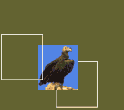 By Rob Baldwin By Rob Baldwin
The mystery of Arabia';s humpback whales has been the subject of much media and scientific attention. Readers of the ninth issue of Arabian Wildlife, for example, will recall reference to them among the region's cetacean rarities, which told of a population of humpbacks living in Arabian Sea waters off the Sultanate of Oman. This population has perplexed cetologists (those lucky enough to dedicate their time to the study of cetaceans) for many years, owing to the fact that it appears to comprise year-round residents. This is remarkable in that all other studied populations appear to migrate annually between polar feeding waters and tropical breeding waters. Arabian humpbacks, hidden along the remote coastal waters off the shores of the Sultanate, are unlikely to mix with conspecifics elsewhere in the world. This therefore presents the possibility of a genetically isolated, unique population of this species.
The most compelling evidence for this has come from analysis of historical data of illegal Soviet Union whaling activity that took place in the mid to late 1960s. Now, new evidence is emerging from on-going research that will begin to reveal the full story behind this
unusual population in Arabian Seas. The Oman Whale and Dolphin Research Group (OWDRG), a non-profit group of researchers and marine scientists based in the Oman's capital city of Muscat, has embarked upon a programme that has already resulted in significant discoveries.
Searching the Surf
The work began in earnest when a team of five researchers undertook to investigate in more detail than before, the identity and distribution of humpback whales in Oman’s southern region of Dhofar. Systematic surveys covered a straight-line search distance of over 1,000 kilometres of the sea‘s surface. For those used to cetacean surveys, this will raise no eyebrows, but even seasoned researchers will appreciate the strain of the concentrated effort that is required to search the open sea over such a distance. Add to this unfavourable weather conditions, and work becomes difficult and frustrating. The rise and fall of the swell masks the arching back or tail flukes of a whale remarkably well, and the flung spray of a choppy wave makes sightings of the characteristic blow all but impossible. It was many days, therefore, before the first whale was sighted.
 Last and First Last and First
Perhaps unsurprisingly given the dominance of this species in sightings records in the Arabian Sea, the first sighting was of a humpback whale. However, the particular individual sighted turned out to be of considerable interest and was met with some excitement among the researchers.
Two months before the surveys in Dhofar began, when equipment was being trialed and tested in the relative calm of the Gulf of Oman, a lone humpback whale was sighted close to Muscat's rocky shores. The whale obligingly surfaced in front of a researcher testing a new telephoto lens and SLR camera, which captured a good image of the whale's tail fluke, stored as one of the first quality entrants in the OWDRG's photo-identification catalogue.
Imagine the surprise of this researcher when the very same whale, and the last he had seen before now, once again surfaced in his camera frame! This remains the only re-sighted individual as identified by the fledgling photo-identification study, which currently includes photographs of just 15 recognizable individuals, but demonstrates that this particular whale moved over 1,000 kilometres from the Gulf of Oman to Arabian Sea waters during winter months. It is hoped that the photo-identification catalogue will be expanded and, with the cooperation of other researchers in the Arabian region and further afield, will begin to throw light on the seasonal movements, if any, of Oman's humpback whale population.
Arabian Tunes
Despite this initial excitement, rough seas again dominated the scene during the next few days. With sighting efficiency reduced, the researchers began to employ alternative techniques, including deployment of a hydrophone specifically designed for the task and connected to a digital audio-video recorder. On occasion this revealed the presence of cetaceans, busy in their world of underwater sound, long before they were sighted, if indeed they ever were. Most importantly, however, it captured the song of Arabian humpback whales, which, it appears, may have a tune all of their own.
Humpback whales, and more specifically, male humpback whales, are world-renowned for their seasonal singing soirees, which, it is thought, are associated with breeding. Why the whales sing is not fully understood, but it is hypothesised that the singing may be designed to attract and woo females or perhaps to send messages to other males and thereby earn a place in a dominance hierarchy. In some parts of the world, songs have been studied in detail. This has revealed that they are typically made up of a circular sequence of themes, each comprising sets of phrases. These phrases are repetitions of the shortest sound units and are found to be remarkably consistent among isolated populations, perhaps changing slightly from season to season, but providing an identifying feature for each population studied. More recently it has been shown that whales are able to learn and adopt songs from other populations, elements of which may then begin to spread into the new population.
The songs recorded in the remote waters of Dhofar earlier this year include familiar characteristics, but are also likely to include entirely new elements which make the songs quite distinct from all others recorded. The very fact that humpback whales were found to be singing in Dhofar is remarkable, but the distinctive nature of their songs provides yet further evidence for an isolated population, that displays morphological, ecological and behavioural peculiarities not shared with others of its species.
A new breed?
Yet further fuel to support the theory of the possible isolation of humpback whales in Oman was provided during the remainder of the survey. Where humpback whales breed, they are rarely, if ever, observed to feed. Instead, entire populations throughout the studied world make seasonal migrations from warm waters that apparently suit the needs of calves, to cold, prey-rich feeding grounds. Research into the energetics of humpback whales suggests that this may in fact be the most energy-efficient strategy compared to the alternative of remaining in feeding grounds all year. It is possible that other factors, such as predation of calves by orcas, may also have influenced the evolution of these seasonal movements.
To observe feeding whales alongside singing whales in Dhofar was therefore a remarkable and exciting event, in spite of the historic data from the illegal Soviet whaling activities. In addition, the feeding techniques witnessed may represent a unique behavioural trait, developed, again, in isolation from other populations and tailored to exploit the particular characteristics of Oman's marine ecosystem. Only further research will confirm this hypothesis and enable precise description of feeding behaviours.
 Skin Deep Skin Deep
One of the main aims of the survey, once whales were found, was to obtain skin samples for genetic analyses. This can be achieved through biopsy techniques, which normally involve firing a projectile dart at the animals that harmlessly strikes the surface of the skin and bounces off into the water. The tip of the biopsy dart is then collected, together with the sample of skin that it contains. Due to difficulties in importing such equipment into the Sultanate, however, this technique could not be employed. Instead, skin was collected passively. This is enabled by the fact that the whales naturally slough skin in warm waters, particularly when engaging in energetic behaviour such as breaching or tail slapping. By snorkelling in the swimming path of the whales after they had passed by, researchers were able to collect the valuable samples that will be analysed for their genetic make-up. With enough samples, genetic studies will provide much more than a skin deep insight into a wide and complex range of issues about Oman's humpback whale population and its relationship with populations elsewhere in the world. Related information, such as the photo-identification studies will complement and add to the results of genetic research.
Future Plans
The field work this year in Dhofar is part of a programme for study of Oman’s cetaceans that has been progressing, in a variety of forms and with varied degrees of effort, for many years. Over the coming years, it is planned that this work will continue with primary emphasis on humpback whales. The detail of these studies, and many others which are proposed, will depend upon the level of funding that can be obtained and the level of collaboration and participation that can be achieved among researchers both within the Sultanate and elsewhere.
All material on this page is copyrighted by Trident Press Ltd and/or individual contributors.
Unauthorised use of photographs or text is strictly prohibited.
|
|




 By Rob Baldwin
By Rob Baldwin
 Last and First
Last and First